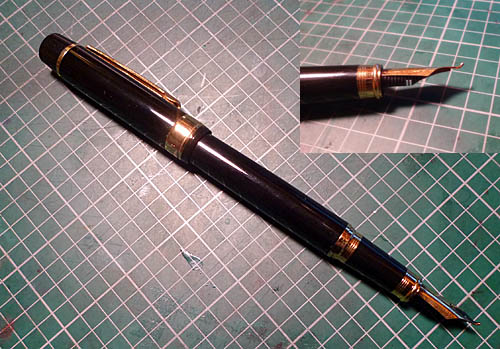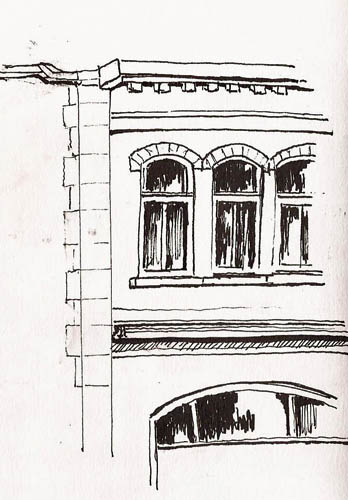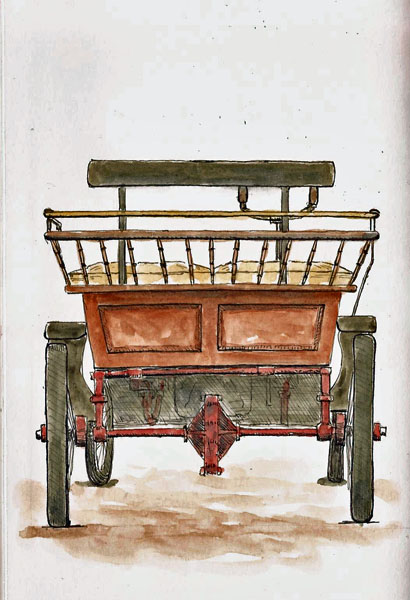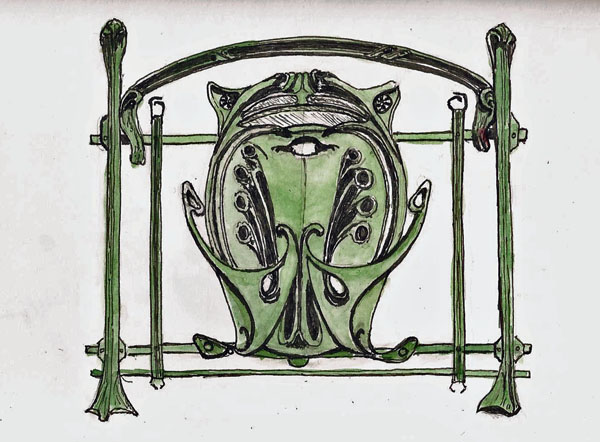Some sketchers love watercolors. Others are passionate about line. And, of course, there are those who do a combination of the two, with varying emphasis on one or the other.
For myself, if I had to do one or the other, line work, particularly that made by fountain pen, would be my choice. My use of watercolor is similar to what I did with crayons when I was a kid – I “color” inside the lines.
My lines tend to be thin and my favorite pens are those that produce them. Pens like the Pilot 78G, Pilot Prera, and Platinum Carbon pen are among my favorites. My TWSBI Mini produces a slightly heavier line but even it is finer than the typical “medium nib” pen.
One intriguing exception in my personal fountain pen mountain (and I swear that I need them all) are my Hero “calligraphy” pens. Some call them “bent nib” pens. The “calligraphy” moniker is misleading for western-worlders as they don’t work at all like western calligraphy pens but are, rather, designed for writing Chinese characters. You affect line width by varying the pen angle rather than pen direction as with a western calligraphy pen.
There are several companies that produce them but Hero is the company that seems to make the largest number of models. They are available in North America for not much money via eBay but one must be careful to ensure you’re getting a calligraphy pen as Hero makes standard fountain pens as well.

Hero 578 fountain pen. Note bent tip.
I have several of them and I’ve played with them some but have never taken them seriously. I’ve decided to change that and really learn to use them. To me, their big advantage is the ability to generate very wide lines as well as fine ones, permitting the creation of larger dark areas in a pen sketch. Their downside is that I can’t get as fine a line as I can from some of the other pens I’ve mentioned.
I was out the other day and I did this quick sketch from the 2nd floor dining area of our downtown McDonalds. You can see how even an inexperienced person like myself can generate high contrast sketches using the pen. Here I’m using a Hero 578, which is a fairly heavy pen but I like how it feels in my hand.

Stillman & BIrn Alpha (4×6), Hero 578, Platinum Carbon Black
Later, while at the Musée d’Amerique Français I sat in a comfy chair, looked out the window and sketched this portion of one of the seminary buildings.
The folks who have the most experience with these pens are the Singapore urban sketchers. Maybe with some practice I can begin to emulate them.

Stillman & Birn Alpha (4×6), Hero 578, Platinum Carbon Black







